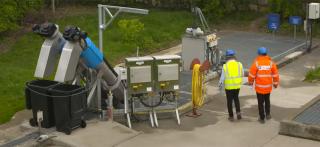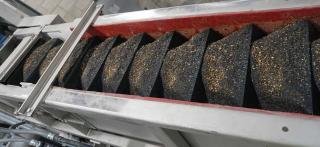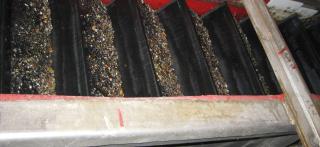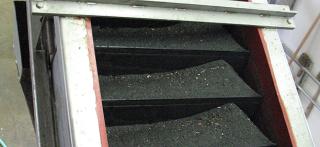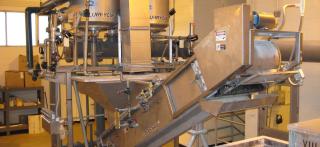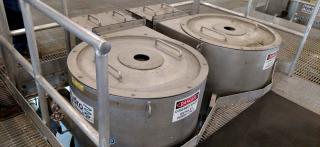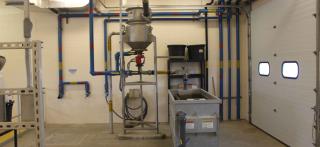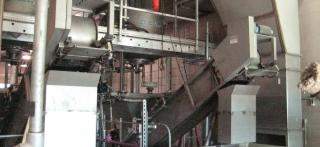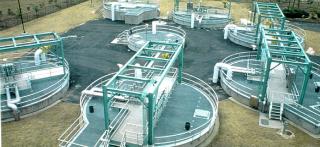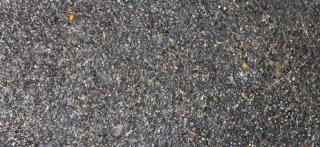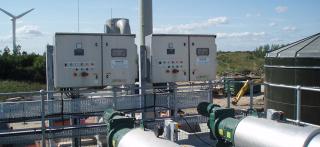
Rock Creek AWWTF's Sludge Degritting Solution
Sludge degritting system improves sludge quality and treatment capacity.
Situation
The Hillsboro, Oregon Rock Creek Advanced Wastewater Treatment Facility (AWWTF) lies in a suburb southeast of Portland. The facility serves the needs of a rapidly growing suburban community as well as nearby industrial giants like Intel and Nike.
This AWWTF is also designed to accommodate flows from the nearby Forest Grove and Hillsboro treatment plants as needed, typically during the dry season. This allows Clean Water Services, the agency that operates multiple treatment plants in the area, options to most effectively treat wastewater and recover by-products. After treatment, the plant discharges to the nearby Tualatin River.
Project Objectives
- Improve sludge quality to increase sludge treatment process performance.
- Facing limited space for headworks grit removal, the plant needed a small footprint grit removal solution.
Project Profile
- Plant flows 35 Mgal/d (133 MLD) Average and 160 Mgal/d (606 MLD) Peak
A History of Severe Water Pollution
The Tualatin River, southwest of Portland, Oregon was originally called the “Sluggish River” by Native American Tribes due to slow flows. These slow flows make river pollution particularly problematic, in the 1960’s the watershed's condition was bad enough to force the state to issue a pollution-related building moratorium in the area.
By the 1970’s, growth in population, industry, and agriculture in the region had led to extreme pollution problems, causing the Tualatin River to be the first in the state to fail EPA Clean Water Act pollution standards. In the 1970’s local wastewater treatment consisted of six small and inefficient treatment plants that were struggling to meet the demands of a rapidly developing region.
In 1978, after decades of severe water pollution, Hillsboro Clean Water Service’s Rock Creek wastewater treatment plant began operations. The plant was built to replace and consolidate flows from the six existing plants and improve the region’s water quality.
Solution
In the early 2000’s the area’s population had continued to grow, and Rock Creek now required a major upgrade that also meant a major flow increase. The project also required additional primary clarification which would be installed in space that would have traditionally been used for headworks grit removal.
However, there was an available location for a small footprint sludge degritting solution.
Outcome
CH2M Hill was selected as the consulting engineer to determine and design the most viable option for the plant that could fit into their available footprint. The plant and engineer evaluated various treatment technologies along with Hydro International’s SlurryCup™ / Grit Snail® system in Green Bay, Wisconsin.
For this rigorous application, the small footprint design, unparalleled performance, and the proven success at Green Bay led to the selection of a SlurryCup / Grit Snail sludge degritting system.
As a result of the most recent plant upgrade, Rock Creek has been able to optimize their Ostara process to help reverse water pollution in the Tualatin River. Now the plant discharges water so clean that it actually improves the river’s aquatic ecosystems. Today over half a million people live within the Tualatin River watershed.
System Advantages
- Over 90% removal of 75 μm particles (2.65 Specific Gravity)
- Removes as much as 20 times more grit than a cyclone / screw classifier
- First flush solids handling capacity minimizes grit loss
- Low organic content (< 20% VS) of classified grit, reduces volume going to disposal
- 60% total solids content
- Enclosed system improves odor control
- Significantly reduces O&M costs
- Hydro International sludge degritting is a proven, tested technology with a long history of operation
- The small footprint SlurryCup / Grit Snail sludge degritting system provided the performance needed in this challenging application.
Project Equipment
Rock Creek’s SlurryCup™ / Grit Snail® Advanced Sludge Degritting System
- Two (2) 42” (1 m) SlurryCup™ Units
- Two (2) 6 yd3/hr (4.6 m3/hr) Grit Snail® Units
- 75 micron removal

